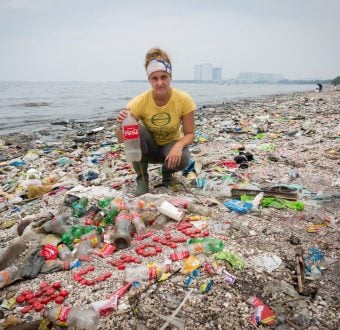The global computer games sector shipped 62.7 million units in
2006. Growth of 14.9 percent in 2006 made it one of the fastest
developing sectors in the field of electronic products. The low
scores from leading manufacturers Nintendo and Microsoft reveal
that they have a long way to go to improve their environmental
policies and practices.
“While it’s encouraging to see Sharp and Microsoft providing
timelines for the complete elimination of vinyl plastic (PVC) and
all brominated flame retardants (BFRs) across their entire product
range, makers of TVs and computer games have a long way to go,”
said Iza Kruszewska, toxics campaigner at Greenpeace
International.
The new edition of the quarterly guide shows important changes
at the top of the ranking. Sony Ericsson has taken over the top
spot from Nokia while Samsung and Sony have surged ahead to occupy
second and third positions.
However, Nokia, Motorola and Sony Ericsson each received penalty
points for not fully honoring their own recycling take-back
policies in the Philippines, Thailand, Argentina, Russia and India.
As a result, Nokia falls from top position to ninth and Motorola
drops from ninth position to fourteenth. Greenpeace tested
implementation of product take-back programs in the United States,
the Philippines, Thailand, Russia, Argentina and India.
“Companies shouldn’t be under any illusions that Greenpeace
won’t check up on their claims of green greatness,” warned
Kruszewska.
Apple, Panasonic, Samsung, Sharp, Sony and Toshiba have recently
indicated that they now produce personal computers, lighting LCD
panels, camcorders and digital cameras – or at least major
components of these items – free of PVC and/or BFRs.
Firms that have improved their ranking in the Greenpeace guide
are those whose entire products, or major components of products,
are entirely free of specified hazardous ingredients. Companies
that simply commit to eliminating harmful chemicals sometime in the
future achieve a lower score.
“To achieve higher rankings, companies really need to walk the
talk instead of making vague commitments to future progress,” said
Rick Hind, Legislative Director of the Greenpeace toxics campaign
in the U.S. “Environmental leadership and innovation are evident
as companies put products on the market free of hazardous chemicals
and institute recycling take-back programs which are actually
operational,” said Hind.
VVPR info: Rick Hind, Greenpeace USA legislative toxics director, Tel: +1 202 319 2445;
Jane Kochersperger, Greenpeace USA communications, Tel: +1 202 680 3798
Notes: The sixth edition of Greenpeace International’s ‘Guide to Greener
Electronics’ is available at:
http://www.greenpeace.org/international/campaigns/toxics/electronics/how-the-companies-line-up

